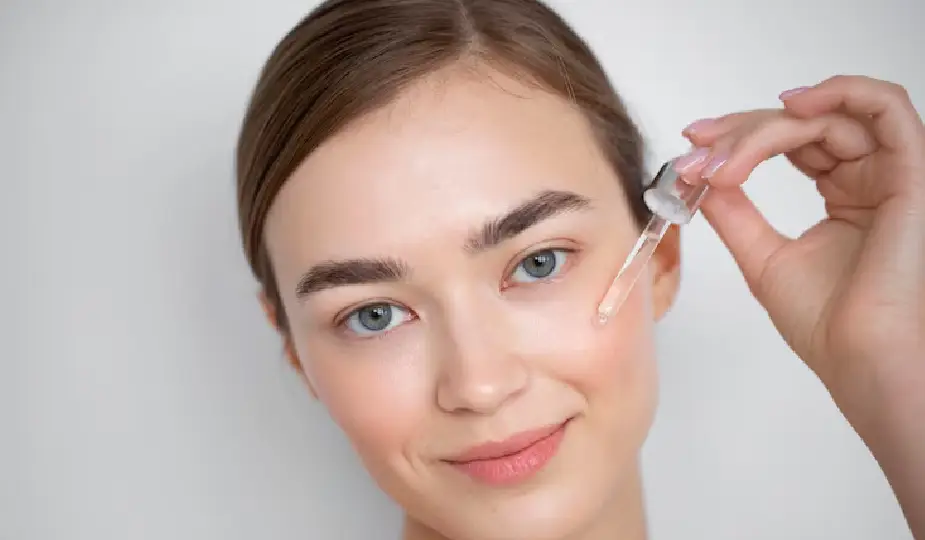7 Powerful Steps to Effectively Know How To Put Retinol on Face”
Retinol, a powerful form of Vitamin A, is one of the most effective ingredients for fighting signs of aging and improving skin texture. But while it’s a miracle worker for many, knowing how to properly use it is key to avoiding irritation and getting the best results. This guide will walk you through the steps on how to put retinol on face and tips for incorporating it into your skincare routine safely.
Table of Contents
Understanding Retinol
Retinol works by increasing cell turnover, which helps to fade dark spots, reduce fine lines, and improve skin texture. There are various types of retinoids available, such as prescription-strength retinoic acid and over-the-counter retinol, each with different potencies.
Why Incorporate Retinol into Your Routine?
Retinol isn’t just another trendy ingredient; it has scientifically-backed benefits:
- Anti-aging: It stimulates collagen production, reducing the appearance of fine lines and wrinkles.
- Acne treatment: It helps prevent clogged pores and acne breakouts.
- Brightening: It improves skin tone by speeding up the removal of dead skin cells.
Precautions Before Applying Retinol
Before diving into a retinol routine, it’s crucial to take certain precautions. Always do a patch test before full application to ensure your skin doesn’t react badly. Also, avoid using retinol if you’re pregnant or breastfeeding.
How to Prepare Your Skin for Retinol
Preparation is everything when using retinol. Start by cleansing your face to remove dirt, oil, and makeup. Use a gentle cleanser to avoid stripping your skin. After cleansing, make sure your face is completely dry, as applying retinol on damp skin may cause irritation.
“Boost Your Glow: 24-Hour Cooling Facial Moisturizer for Instant Hydration and Radiance”
How to Put Retinol on Face
Now, let’s get to the good part—how to put retinol on face for the best results.
- Step 1: Start with a Pea-Sized Amount
Less is more when it comes to retinol. Use a pea-sized amount and apply it evenly across your face. - Step 2: Apply in Gentle, Upward Motions
Gently rub the retinol into your skin in upward motions. This helps with absorption and minimizes tugging on your skin. - Step 3: Avoid Delicate Areas
Avoid applying retinol too close to your eyes, lips, or the corners of your nose as these areas are more sensitive.
When to Use Retinol
Retinol is best applied at night because it can make your skin more sensitive to sunlight. As a beginner, start by using it just two or three times a week, and then gradually increase frequency as your skin builds tolerance.
Layering Products with Retinol
If you’re wondering whether you can layer retinol with other skincare products, the answer is yes—carefully.
- Moisturizer: A good moisturizer is essential when using retinol to minimize dryness.
- Sunscreen: Retinol can increase sun sensitivity, so apply a broad-spectrum sunscreen the next morning.
- Avoid certain products: Stay away from exfoliants or strong acids like AHAs and BHAs when using retinol, as they can increase irritation.
Retinol Side Effects
Using retinol can cause some initial dryness, peeling, and irritation, especially for first-time users. But don’t panic—this is common and usually subsides after a few weeks.
Adapting to Retinol: The Purging Process
If you notice more breakouts when you first start using retinol, this could be a sign of purging. This occurs when retinol speeds up the process of bringing underlying impurities to the surface.
How Long Does Retinol Take to Show Results?
Patience is key. You might start noticing improvements in your skin texture and tone after 4-6 weeks, but significant results, like reduced fine lines, may take 3-6 months.
Tips for Sensitive Skin
If you have sensitive skin, start with a lower concentration of retinol or buffer it by applying it over your moisturizer. You can also opt for retinol alternatives like bakuchiol, which offer similar benefits with less irritation.
Kiehl’s Skincare: A Complete Guide to Glowing Skin
Myths About Retinol
Let’s clear up some common misconceptions:
- Retinol causes sun sensitivity: Retinol itself doesn’t make your skin more sensitive to the sun, but it can cause dryness, which may lead to irritation.
- More retinol is better: Using too much retinol can actually damage your skin, so stick to the recommended amount.
Mistakes to Avoid When Using Retinol
Some common mistakes people make when using retinol include:
- Using too much too quickly
- Combining it with harsh exfoliants
- Not applying sunscreen the next morning
Conclusion
Retinol is a game-changer for anyone looking to improve their skin’s appearance, but using it properly is essential. By starting slow, applying the right amount, and pairing it with gentle products, you’ll be on your way to glowing, youthful skin in no time.
FAQs
Can I use retinol every day?
It’s best to start using it 2-3 times a week and gradually increase frequency as your skin adjusts.
What age should I start using retinol?
You can start using retinol in your mid-20s to prevent early signs of aging.
Can retinol cause breakouts?
Yes, initial breakouts can occur due to purging, but this typically clears up after a few weeks.
How do I store retinol to maintain its effectiveness?
Store it in a cool, dark place, as heat and light can degrade retinol.
Can I use retinol with other active ingredients like vitamin C?
It’s best to use vitamin C in the morning and retinol at night to avoid irritation.
